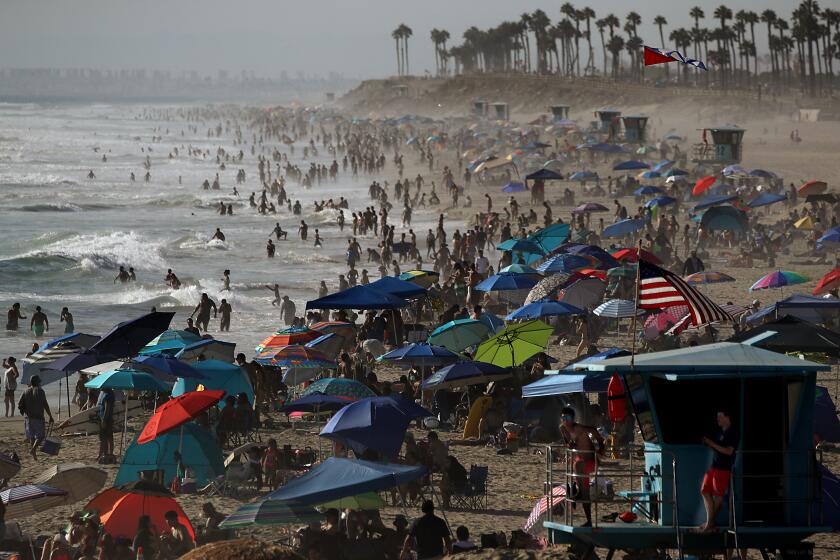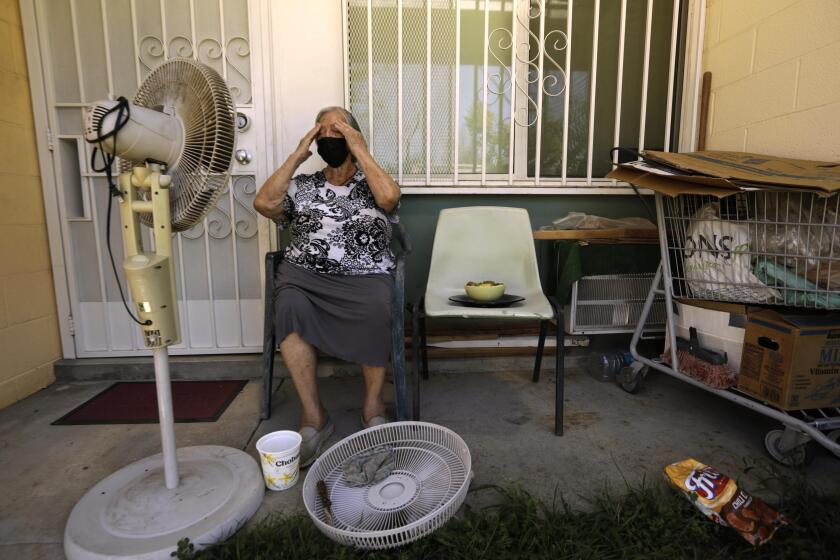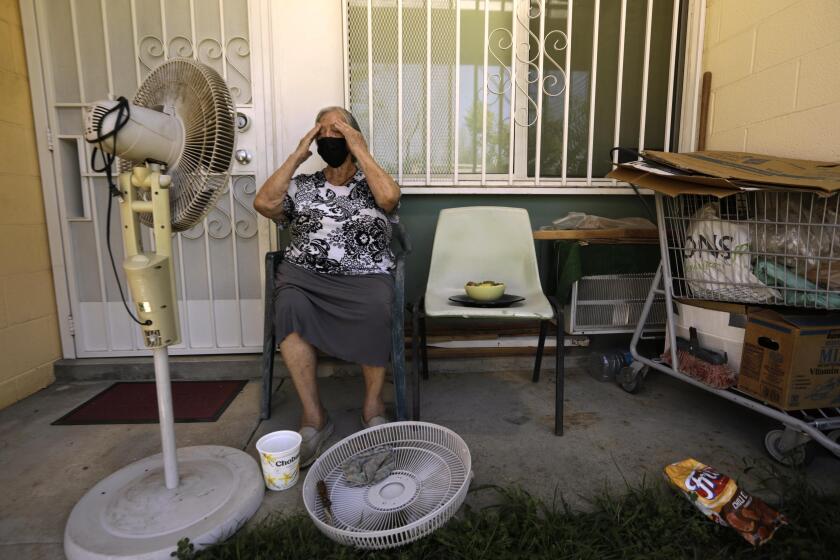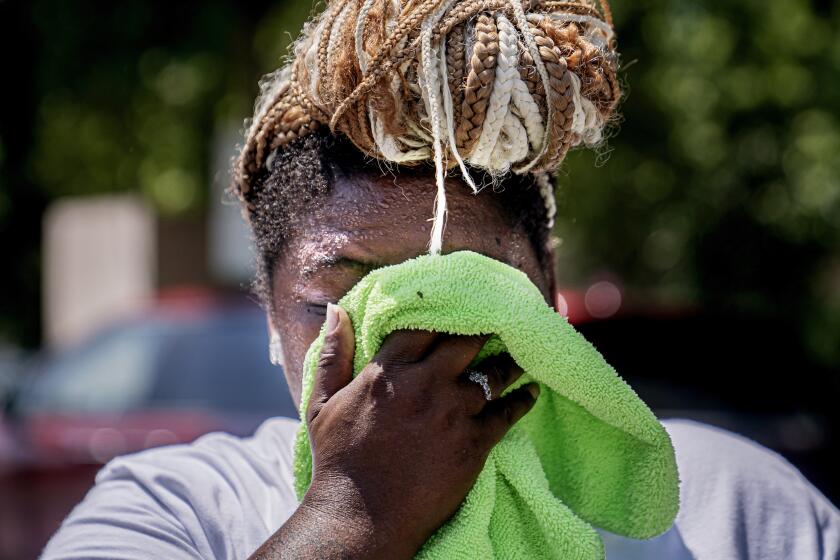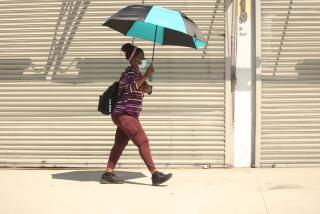What’s the cost to cool Los Angeles? City explores a cooling mandate for all rental units
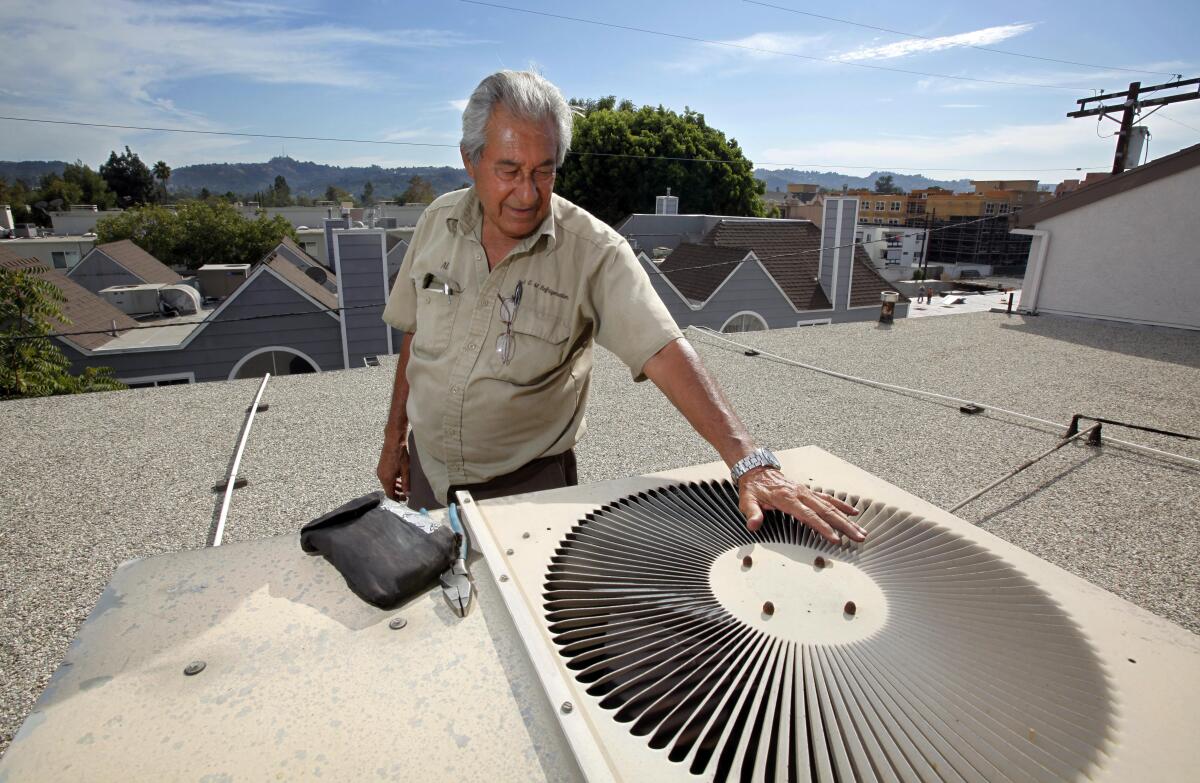
Heading into the peak of summer, Los Angeles officials want to know what it would take to require every rental unit in the city to have an air conditioner or central air.
Just last year, Southern California was gripped by a 10-day heat wave that smashed temperature records. By the time it subsided, Los Angeles County emergency crews had responded to 146 calls classified as “heat” — defined by the agency as environmental hyperthermia.
Now, city staff are studying the costs and feasibility of cooling off all rental units citywide.
“At this point in the climate emergency, the ability to cool one’s home cannot be considered a luxury and rather must be treated as a necessity,” Los Angeles City Councilmember Eunisses Hernandez said in her motion proposing the feasibility study, which would include a cost estimate for updating the city’s building code.
“Requiring cooling apparati for all residential units could be a lifesaving measure for countless Angelenos during extreme heat events.”
The council approved the motion Wednesday, and it is expected to come back for public input.
Residents describe how they’re fighting the heat without A/C, whether it’s a hotel stay or a bowl of ice in front of a fan.
A 2021 Times investigation found that 3,900 deaths were caused by extreme heat in California from 2010 to 2019. But access to lifesaving cooling devices and the ability to cover the costs of electricity during a heat wave are often out of reach for low-income and elderly residents on a fixed income.
As part of the proposed study, the council asked staff to determine which buildings lack submeters, devices that allow utility companies to track power consumption on a unit-by-unit basis, and also the difference in costs between installing wall air conditioning units versus a central air system for an entire building.
Currently, air conditioners or central air are not required to ensure a rental unit is habitable in California, according to the state building standards code.
The lack of an air conditioner didn’t bother Juliana Wingate when she and her husband moved into their apartment last year near MacArthur Park. Then in late August a record-breaking heat wave hit and Wingate felt miserable.
“Our cat spent most of his time in our bathtub because it was so much cooler,” said Wingate, who recalls feeling lightheaded and nauseated during the 10-day heat wave, when temperatures topped 100 degrees.
She hasn’t thought about the lack of a cooling device this year, but now that it’s getting warm again she’s wondering if it would be better to just leave their second-story apartment.
“Clearly, if that’s not possible, I will bring it up with our landlord,” Wingate said. It’s unclear if that would mean her rent would go up, but she’s not sure she could stick it out for another summer.
“I love that every year just keeps getting hotter,” Wingate said sarcastically.
California laid the groundwork for an extreme heat action plan last year and earmarked $800 million to address the issue, but also saw a proposal to establish a chief heat officer fail in the state Assembly. A statewide warning and ranking system for extreme heat events is expected to launch by 2025, providing general information to the public, much like the way other states respond to hurricanes.
The governor has released guidelines following a Los Angeles Times investigation into California’s failure to address heat-related deaths.
But to advocates — such as housing policy coordinator Jovana Morales with Leadership Counsel for Justice and Accountability, a Central Valley advocacy group — it feels like the emphasis on addressing climate change and strengthening heat waves is often ignored until summer rolls around and reminds everyone of the danger.
“I just don’t feel like there is urgency in the Legislature,” Morales said. “You know ... we’ve been working on this, and people have been advocating for solutions, especially ... in the home, but it’s just not happening fast enough.”
Morales’ group last year supported Assembly Bill 2597, which sought to update the state’s building code to set a safe maximum indoor temperature in new and existing dwelling units. Units found without cooling options would be deemed substandard, according to the bill, which failed to become law.
The proposed code update was meant to address workers who live in substandard housing conditions, where temperatures often become so hot that units are unsafe to live in, Morales said.
A new UCLA mapping tool alerts Los Angeles County residents of extreme-heat danger in their neighborhoods.
But Leadership Counsel was not focused solely on air conditioners. It pushed for improved insulation, increased shade through landscaping, heat pumps and roofs designed to reflect sunlight. AC units were not an emphasis because they generate greenhouse gas emissions.
“Many of the older buildings just don’t have that cooling mechanism, and so our bill would have required to set an indoor maximum air temperature,” Morales said.
Older buildings are often the only units low-income families can afford, Morales said, and they would benefit the most from updates to the housing code to require cooling standards.
City leaders directed staff to study an update to the housing code and explore potential programs to help low- and middle-income families pay for the installation and operation of an AC unit.
In much of Earth’s wealthy mid-latitudes including parts of the U.S., spiking temperatures and humidity that feel like 103 degrees or higher — now an occasional summer shock — statistically should happen 20 to 50 times a year by mid-century, a study finds.
Fred Sutton, senior vice president of local public affairs for the California Apartment Assn., said tenants are aware of the amenities available when they sign a lease. Those tenants can and should approach their landlords if they want to have a cooling device installed in their units, he said.
But mandating that all rental units have a cooling device would push the cost onto the landlords and the tenants, Sutton said.
“I heard a lot from the city about subsidies for tenants facing extra utility costs,” Sutton said. “But what cost would that work mean for the building and the [landlords]?”
The Los Angeles Department of Water and Power offers options for low-income residents through the Cool LA program it launched last summer. Those include subsidies to help pay electric bills during a heat wave, rebates to offset costs and other resources meant to help residents weather the heat.
The requested report is expected to be presented to the City Council’s Housing and Homelessness Committee in the next several weeks.
More to Read
Sign up for Essential California
The most important California stories and recommendations in your inbox every morning.
You may occasionally receive promotional content from the Los Angeles Times.
